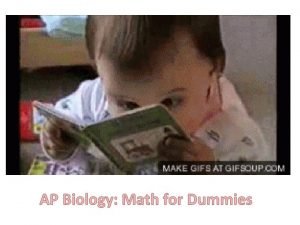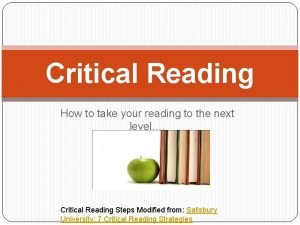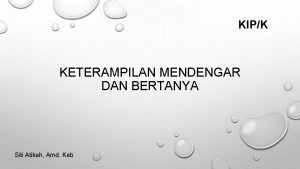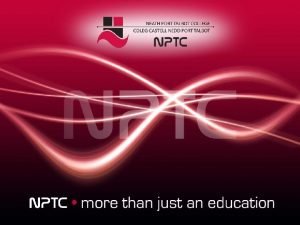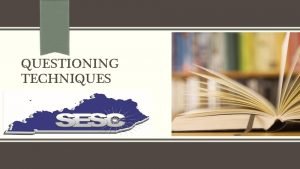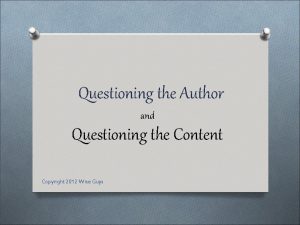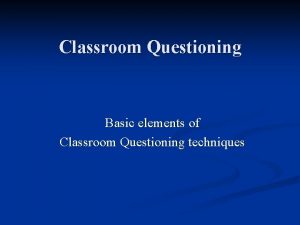Questioning and Discussion in Science The 5 Practices










- Slides: 10

Questioning and Discussion in Science

“The 5 Practices” Focus on student’s use of: Experimentation Data representation, analysis and interpretation Explanation of patterns and phenomenon Increasing cognitive demand of tasks: Minimize prescriptive directions Provide complex data that students must interpret Give students an audience Re-sequence lessons – let students explore before teaching

“The 5 Practices” After developing a rigorous task: 1. Anticipate how students will respond 2. Monitor what students do as they work 3. Select students to present their work 4. Sequence the presenting students in a meaningful order 5. Connect student responses to science content.

Picture Prompt Show the class a complex diagram/image. Each person must explain one thing about the image.


Thinkathon Each group begins at a station with a chart paper containing a diagram or question. Students explain the diagram/answer the question. Groups rotate to the next diagram. They agree or disagree with previous answers by making a “ ” or “X” and then write their own answer. After groups finish rotating, they present their diagram/question to the clas. .


If you hold a fire to steel wool, it will burn and change color. After it changes color, it will not burn anymore. Why? Explain what is happening.

Layered-Cake Discussion Students are broken into groups Groups all work on the same task After a set amount of time, groups share out and have a class discussion

A student made a copper bracelet by hammering a small copper bar into the desired shape. The bracelet has a mass of 30. 1 grams and was at a temperature of 21°C in the classroom. After the student wore the bracelet, the bracelet reached a temperature of 33°C. Later, the student removed the bracelet and placed it on a desk at home, where it cooled from 33°C to 19°C. The specific heat capacity of copper is 0. 385 J/g • K. Explain, in terms of heat flow, the change in the temperature of the bracelet when the student wore the bracelet.
 Questioning and discussion techniques in the classroom
Questioning and discussion techniques in the classroom Using questioning and discussion techniques
Using questioning and discussion techniques Questioning and discussion techniques
Questioning and discussion techniques Costa's levels of questioning science
Costa's levels of questioning science Discussion of simple distillation
Discussion of simple distillation I like science subject because
I like science subject because Ap biology for dummies
Ap biology for dummies Professional practices in computer science
Professional practices in computer science Observing and questioning
Observing and questioning Critical reader definition
Critical reader definition Listening and questioning skills
Listening and questioning skills






